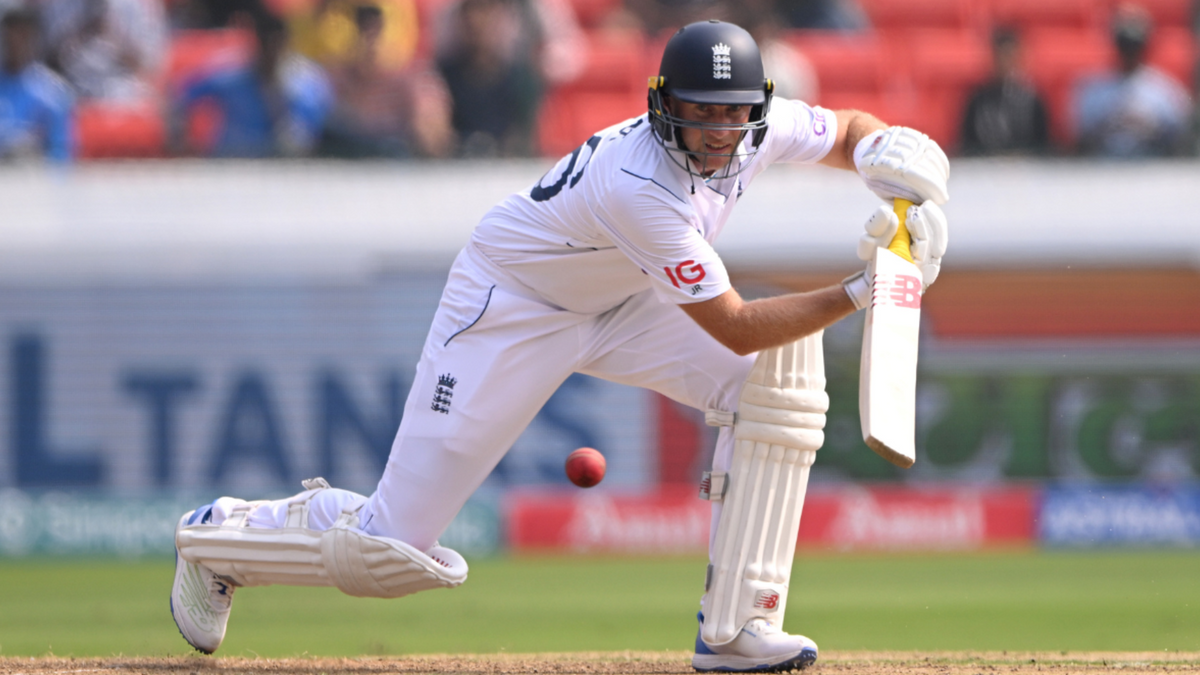
The feeling is starting to creep in that Joe Root’s record against spin – he averages 46.14 for over two thousand runs in Asia – is propped up by big scores in relatively benign conditions, writes Ben Gardner.
Subscribe to the Wisden Cricket YouTube channel for post-match analysis, player interviews, and much more.
Ten balls, two fours (one reverse-swept first ball, one reverse-gloved third ball), one six, one marginal lbw decision, one down-the-track skew to backward point. So came and went Joe Root, England’s greatest modern batter, with his side well-set in pursuit of a record target to go 2-0 up in a country no touring side has won a series since his debut Test match, 12 years ago.
On the one hand, being level at 1-1, resurgent in the first Test and competitive in the second without Root making it to 30 is some kind of miracle. On the other, this was a hot-headed innings when England needed some calm, the kind which is still allowed, actually.
The suggestion that Root should be England’s straight man among the group of clowns has always felt faintly cruel. It was he who stood tall and led England through the wilderness. Is it really fair to ask him now to guard the luggage while everyone else enjoys the water park?
But then we’ve been here before, and no one will be more frustrated than Root himself. In England’s first innings in New Zealand last year, Root had one half-century in six Tests, and was out reverse-ramping. The feeling, echoed by Root, was that while the rest of England’s batters needed a new way of thinking, he was best just being himself. “I’ve maybe got a bit caught up in it,” he said. He made a fifty in the second innings of that game – “back in his ODI rhythm”, as Stuart Broad put it – and went on to make a sublime hundred in the second Test.
This is the comfort for England fans. Root has done this before. He knows how to rediscover his form on the rare occasions he’s misfiring, and now he has ten days between Tests to do so.
The worry is that Root’s challenge might not just be with himself but with the conditions. His run of poor form in India stretches back to the second innings of the first Test in 2020/21, Root averaging 18.36 with a high score of 40 in 11 innings since then. The counterargument is that the innings before that cut-off was a mammoth, match-defining double hundred, the high point of the Chris Silverwood era, and that Root’s overall record in India is good. He crossed 1,000 runs in the country during today’s innings, and averages 43.65.
But the feeling is starting to creep in that Root’s record in Asia is propped up by those big scores in relatively benign conditions. His other hundred in India came at Rajkot in 2016/17, in the first innings of a drawn game in which five other batters made hundreds. His Chennai double was preceded by two big hundreds on flatter surfaces against a weak Sri Lanka side. It’s important not to over-egg this: all batters will average more when the pitch is turning compared to when it isn’t, and all batters’ records look worse if you take out big scores.
But Root is arguably yet to make a statement score against a top-class spin attack in trying conditions, with the closest candidate being his century against Sri Lanka in 2018, in the third Test of a 3-0 whitewash. His assessment of Ollie Pope’s innings at Hyderabad as outstripping anything he had achieved in the subcontinent was high praise, but not hyperbole. The surfaces in this series have been excellent but more challenging than those on which Root has succeeded in India before. A classic century with the spinners in command is a box Root is yet to tick.
There is also the Jasprit Bumrah factor. No one has been dismissed more often by the India quick than Root, who was one of the victims of a game-changing spell of reverse swing in the first innings. No one in world cricket is more capable of bowling a ball about which a batter can do nothing. But if Root is rushing to make runs until he gets out, at the moment, it isn’t working.
Again, however, some perspective is needed. This is Joe Root, who couldn’t convert fifties and then couldn’t stop making doubles, who couldn’t balance batting and captaincy and then had perhaps his finest personal year as everything crumbled around him. It is surely not beyond him to master turning tracks and to rediscover his tempo. Doing both, mid-series, to secure the defining triumph of the era, would be another marker of his greatness.








